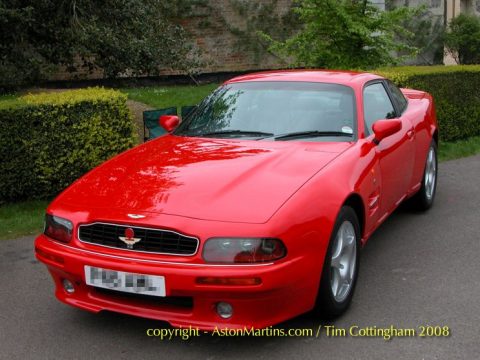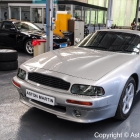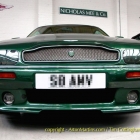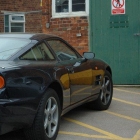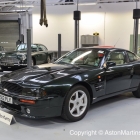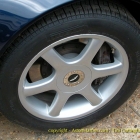With the absence of the large width Vantage wheel aches, the V8 Coupe is both subtle and elegant. The end result of the work was a better looking, better performing update of the Virage. Some even say, that the V8 Coupe is the car that the Virage should have been. The 32 valve engine, still with a capacity of 5340 cc is a non-supercharged version of the Vantage unit producing 349 bhp and 369 lbft of torque give the car a claimed maximum speed of ‘over’ 155mph and a zero to 60 time of a mere 5.9 seconds. A four speed automatic transmission was fitted as standard; no car was built with a manual gearbox what-so-ever although some cars have had one retrofitted.
The six spoke OZ Saturn alloy wheels have slimmer spokes than that of the Vantage and are shod with Pirelli P Zero 255/50 tyres although it is possible to see V8 Coupes with the Vantage OZ 6 spoke wheels or indeed the fancy hollow spoke Dymag wheels. It is also quite possible to see Vantage matte black grilles fitted on V8 Coupes too.
Very few changes were made during the production of the 101 cars. From chassis 79045, the door mirrors were changed from those sourced from the Citroen CX to one from Jaguar. From chassis 79080 (and including 74) the door handles changed to the flush Ford Mondeo type with integral keyhole and also the seats had electrical controls mounted on the squab.
The V8 Coupe is well sort after by collectors and enthusiasts looking for a true coach built Aston Martin. With out the complication of superchargers, servicing and fuel costs are less and a very limited production run fuels demand.



